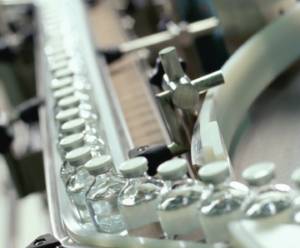
The cold truth about transporting and storing pharmaceutical products

Even as Covid-19 transitions to the endemic phase, vaccines remain crucial to global health and safety. However, they can only be as effective as their cold chains.
Cold chains are storage and transportation systems of temperature-sensitive goods, usually food or pharmaceutical products such as vaccines.
The vast majority of pharmaceutical products need to be stored within a very specific temperature range. This is essential as even minute fluctuations in temperature can affect their efficacy and even render them useless.
Cold chains play an important role in ensuring that pharmaceutical products are transported safely and intact to the people who need them.
The high stakes of cold chains
Pharmaceutical products endure a long and arduous journey by air, land or sea before they are finally administered to patients. It involves various parties, from manufacturers, customs, and national storage facilities to regional hospitals or vaccination centers.
The risk of cold chain failure in pharma is very real – and the consequences can be catastrophic.
One such example is the Covid-19 test kit, which is transported and stored via the cold chain. If test kits are not kept at the right temperature at any point along the cold chain, they could end up producing false-negative results.
The same is true for vaccines. If rendered ineffective because of temperature fluctuations anywhere along the cold chain, spoiled vaccines can be a costly affair, in financial terms. Not to mention, if spoiled vaccines due to cold chain disruptions are not caught in time, they could be injected into patients and cause irreparable damage.
Maintaining a close watch on the cold chain
Fortunately, modern innovations in both transportation and storage have made it possible to prevent the above scenarios from happening.
DHL’s LifeTrack is one such example. A dedicated tracking portal designed for life science sector shipments, it provides near real-time data analytics to ensure safe transportation of goods. Institutions can utilize real-time temperature tracking to monitor their cargo over the extended journey of pharmaceutical products to their desired destination. This allows for immediate mitigative response in case of cold chain failure at any point in time.
Monitoring the cold chain is only one part of the equation. The use of digital twin, for one, also gives logistics firms a simulation of the process, helping to identify weak points. The acquired data can be used to further optimize the cold chain, further enhanced by artificial intelligence and machine learning to predict potential issues in the journey.
Cool innovations to protect pharmaceutical products
Besides taking a more digital approach, there is also a need to look at physical innovations, such as cold chain packaging, to ensure pharmaceutical products are protected along the supply chain. Tapping the natural prowess of wool, Woolcool and Puffin Packaging are just two brands pioneering biodegradable wool fibers as insulation packaging to keep temperature-sensitive pharmaceutical products cool.
Wool packaging keeps these medical items cool by trapping air in its millions of tiny air pockets to create a strong thermal barrier. It outperforms conventional insulation – wool fibers actively absorb air and moisture around the pharmaceutical products and maintain their temperatures – and is especially useful for vaccunes that need to be stored at near-zero temperatures.
Besides being an excellent insulant, wool packaging is one of the most sustainable means of storing vaccines. It biodegrades within six to 12 months, unlike conventional plastic packaging which takes millions of years. After serving as insulated packaging, the wool can be placed on soil and used as compost.
Underlining the importance of cold chain for pharmaceutical products
The cold, hard fact behind cold chain logistics is that there is no room for error. This is especially important for the pharmaceutical industry, as evidenced by the billions of vaccines that were distributed in the wake of the pandemic.
Thus, it is crucial to maintain the integrity of the cold chain logistics. From transportation to storage, injecting innovation into your cold chain can protect your pharmaceutical products from start to end of their journeys like never before.
ALSO WORTH READING















 English
English